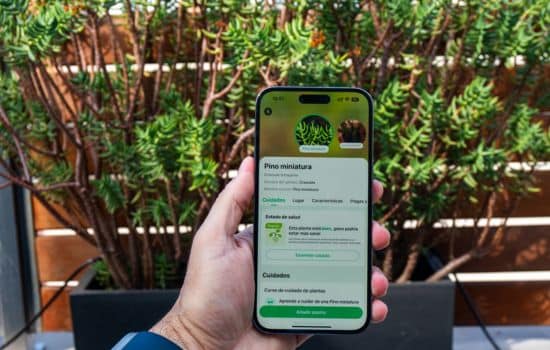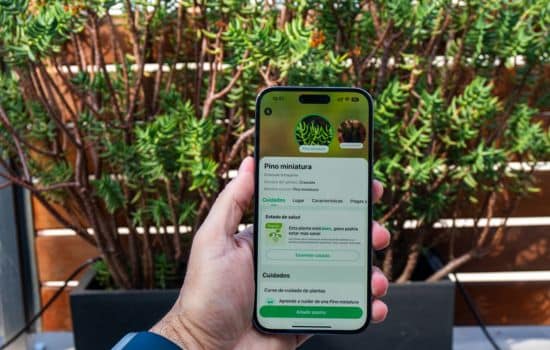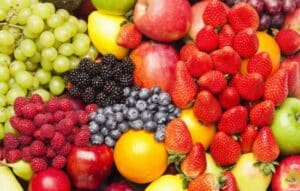The ecological rebirth of our era finds an unexpected ally: your smartphone.
This digital green revolution transcends metaphor to become a tangible reality that transforms mobile devices into portable greenhouses.
Digital botanical assistants transform novices into experts, combating urban “plant blindness” and democratizing ancestral knowledge about flora.
Whether it's identifying a mysterious shrub or rescuing a dying orchid, these apps represent seeds of change in the palm of your hand.
See also
- Find Out Who Visits Your Social Networks with Apps
- Guardians of the Asphalt: Your Digital Shield Against Fines
- Voices Without Borders: Your Sound Identity in a Click
- Digital Roots: Discovering Your Past
- Donima the English in the palm of your hand
The Silent Crisis: Urgent Need for a Digital Connection with Nature
Human disconnection from the plant kingdom is reaching alarming levels:
- 40% of botanical species They face extinction according to the UN, mainly due to ignorance.
- 65% of domestic plants They perish due to preventable errors in basic care (study by the International Horticultural Society).
- Urban generation: 78% of young people under 30 years of age do not distinguish native species from their region.
These applications emerge as technological antidotes that operate in three critical dimensions:
- Accelerated Botanical Education: Instant identification and contextual learning.
- Ecological prevention: Early warnings for pests and diseases.
- Collaborative conservation: Citizen networks that document biodiversity.
Anatomy of a Digital Gardener: Revolutionary Features
Modern botanical applications integrate disruptive technologies:
- Advanced visual recognition: Combining AI and satellite imagery for accurate identification.
- Virtualized sensors: Monitoring environmental parameters using smartphones.
- Ecological Big Data: Cross-referencing millions of data points to personalize care.
- Global communities: Networks of experts that validate findings in real time.
The Golden Triangle: Apps That Redefine Gardening
1. PictureThis: The Botanical Detective
With 50 million global usersThis app solves plant puzzles in seconds:
- Identification engine: Recognizes 17,000 species with 98.7% accuracy using neural networks.
- Phytosanitary diagnostic system: Detects 230+ pathologies with treatment recommendations.
- Digital field notebook: Record growth with temporal photographic comparisons.
- Botanical social network: Connection with specialists for personalized consultations.
Documented impactIn Michoacán, Mexico, farmers reduced avocado losses by 40% using pest alerts.
2. PlantNet: The Collective Botanical Encyclopedia
Developed by researchers from INRAE and CIRAD, transforms citizens into scientists:
- Collaborative architecture: 7 million monthly contributions feed its database.
- Geoecological filters: Identification adapted to local biomes and seasonal patterns.
- Radical transparency: Open data for universities and conservation projects.
Historic achievement: Rediscovery of Aiphanes verrucosa in Colombia, a species considered extinct.
3. Blossom: The Architect of Indoor Gardens
Specializing in urban spaces, it offers:
- Microclimate simulator: Predicts plant development according to environmental conditions.
- Biophilic Design Assistant: Aesthetic compositions based on biological compatibility.
- Integration with IoT devices: Continuous monitoring using smart sensors.
- Precision nutrition: Calculation of nutrient doses according to growth phase.
Emblematic testimony: “My 47 plants survived 6 months with temporary caretakers thanks to their automated protocols” – Laura, Madrid.
Cross-Cutting Benefits: Beyond the Garden
Mental Health and Wellbeing
Research from the University of Cambridge reveals:
- Reduction of 45% We get cortisol levels through guided interactions with plants.
- Meditative effect : 20 minutes daily with these applications equal to a full attention session.
- Intergenerational therapy : avós e nets collaborating in digital botanical projects.
Circular economy and sustainability
- Home economics : save 400 euros per year, avoiding the replacement of plants.
- Hyperlocal commerce : The flower is connected to organic nurseries within a 5 km radius.
- Cuttings market: PictureThis includes certified sharing platform.
Educational Revolution
- Living classrooms: 3,000 schools in Latin America use PlantNet in science programs.
- Botanical gamification: Educational missions to identify species in urban parks.
- Professional Certification: Courses endorsed by international botanical societies.
Methodological Guide: Green Digital Transformation in 7 Steps
- Photographic inventory: Scan all existing plants with PictureThis.
- Environmental analysis: Record light, humidity and temperature levels in Blossom.
- Intelligent programming: Sync care calendars with productivity apps.
- Citizen participation: Documenting local species on PlantNet for scientific studies.
- Advanced automation: Link IoT sensors for real-time measurements.
- Community integration: Join botanical rescue groups in your city.
- Sustainable scalability: Implement vertical gardens using optimization algorithms.
Imminent Future: Emerging Technologies
- Predictive augmented reality: Holographic projections of plant growth over 5 years.
- Emotional vocal assistants: Interpretation of plant states using bioacoustics.
- Ecological Blockchain: Ethical traceability of endangered species.
- Gardening drones: Autonomous systems for the care of large areas.
- Digital biomimicry: Algorithms that replicate growth patterns of primary forests.
Ethical Challenges and Practical Solutions
Plant Privacy
- Risk: Geolocation of rare species in illegal markets.
- Solution: PlantNet offers anonymous mode for sensitive observations.
Generational Digital Divide
- Fact: Only 22% of people over 65 years of age use these tools.
- InitiativePictureThis has added voice assistance in 15 languages.
Technological Limits
- Challenge: 30% error in seedling identification.
- InnovationBlossom developed 3D scanning for deep morphological analysis.
Global Success Stories
- Kenya: Farming communities reduced pesticide use using PictureThis early warnings.
- ChiliCitizen scientists discovered 8 endemic species in the Andes using PlantNet.
- Japan: Tokyo skyscrapers optimized vertical gardens with Blossom, saving 50% of water.
- Spain: Schools in Barcelona created urban green corridors using data from these apps.
Voices of Change: Real Testimonies
"PlantNet revealed that the 'weeds' in my yard were Mapuche medicinal plants. Today I have a natural cosmetics business." – Ana, 48 years old (Chile).
“Blossom’s alert system saved my orchid collection during an extreme heat wave.” – Javier, 35 years old (Mexico).
“PictureThis detected a fungus in my century-old olive trees that no human eye would have discovered in time.” – Ramón, 70 years old (Andalusia).

Conclusion: Cultivating the Future with Collective Intelligence
This digital green revolution represents much more than gardening tools: it embodies a historic reconciliation between humanity and nature mediated by technology. PictureThis, PlantNet, and Blossom symbolize the convergence of ancient wisdom and disruptive innovation, of personal care and global ecological responsibility.
By adopting these platforms, users become:
- Guardians of biodiversity: Documenting threatened species.
- Citizen scientists: Contributing to global research.
- Green architects: Designing regenerative urban spaces.
On a planet where a plant species disappears every two hours, these apps transform mobile phones into digital Noah's arks. They don't limit themselves to saving individual plants; they weave networks of collective consciousness that can reverse the ecological crisis. 21st-century gardening has sprung up: download, explore, and be part of the solution.






